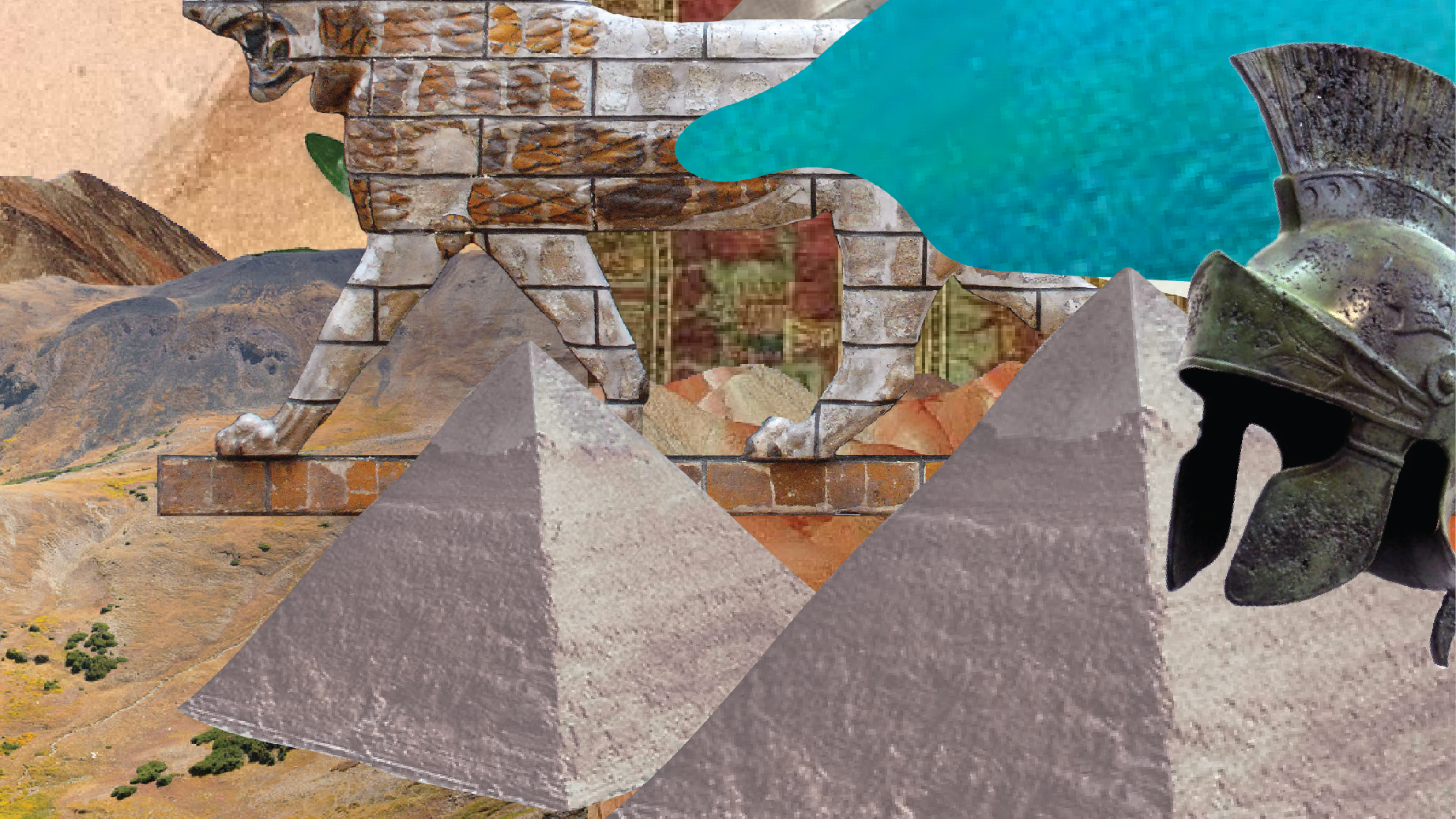How many of us could confidently answer the question, “What does it mean to be made in the image of God?” If you’re not raising your hand right now, you’re not alone. If your hand immediately went up, you might be overconfident. There has been quite a bit of debate (and confusion) about what this actually means, and there is by no means consensus among theologians down through the ages. Western thought leaders tended to define it as immaterial rationality, while the eastern tradition holds something to the effect of the soul in the process of being made like God. Martin Luther viewed the image of God as man’s original righteous condition that has been marred. John Calvin defined it as man’s essential nature, which has a fundamental element of relationality to it. Karl Barth advocated for the image of God as our relational status before God seen most clearly in the relationship between the genders. Wendell Berry and Ellen Davis view it as the aspect that ties us to the land as gardeners and cultivators. Some common views today see the image of God as what distinguishes us from animals (morality, higher thought, etc.), or places us in a position over the rest of creation in a type of administrative role (governor).1
To be sure, all of these views have much to commend them, but none of them are sufficient enough on their own. I think what may be going on is something like a mosaic: all the different pieces are necessary for the picture, but they require connection to actually show the image, and it seems a fairly large piece has been missing for a long time. In this series on mankind as the image of God, I hope to provide some clarity for you as we examine the five major aspects of this reality, something that may just help us gain a better understanding of how the biblical authors viewed this reality and how that should shape and influence the way we view God and ourselves in the world. Before we get to the five major aspects of the image of God, however, we must first take a look at what people in the ancient world believed about images and the critical role they played in this belief system.
Generally speaking, the evidence we have of the image of god in the ancient world was limited to three expressions: 1) an idol, 2) the king, or 3) the image of a king. First, idols were crafted in such a way that they represented the function or role of a deity, not necessarily its actual physical likeness. Thus the emphasis was not on what the deity supposedly looked like but how it functioned in the order of creation.2 Once consecrated, “rituals were performed to transfer the deity from the spiritual world to the physical world, a process that one may refer to as ‘actualizing the presence of the god in the temple.’”3 Thus, the image of a deity was considered the physical manifestation of the god and literal access to communion with the deity. The physical nature of the material statue was an essential aspect of being an image of god: “The common theology of the ancient Near East is precisely a localized, visible, corporeal representation of the divine . . . visibility and bodiliness are minimally a necessary condition of being bəṣelem ’ĕlōhîm or an image of God.4
The second manifestation of the image of god in the ancient world was the king.5 If the gods resided in the heavens and mankind lived on the earth, the king was considered a mediator between the two in order to ensure the well-being of his nation and also to act in all affairs on behalf of the god(s).6 In Egyptian mythology the potter god Khnum shaped two identical pharaohs out of clay on his potter’s wheel, one would be born the king, the other would be the king’s Ka, or divine nature that watched over and empowered him throughout his life.7
The Potter’s Wheel
In the potter’s wheel depiction, as Khnum is shaping the pharaoh on his wheel, the goddess Hathor reaches out to touch pharaoh’s nostrils with the ankh, or breath of life.8 Once the ankh touched the nostrils of the statue it was animated with the breath of the gods and became a living being. Coffin Text Spell 80 personifies this breath as the god Shu, or air/sky, who animates and sustains life on earth: “I will lead them and enliven them, through my mouth, which is life in their nostrils. I will lead my breath into their throats.”9 As the image of god shaped and animated by the gods, the king was considered Horus, the son of Amun-Re . . . the relationship between the chief deity and pharaoh was father and son.10 Unlike Egypt, Mesopotamian kings were considered adopted by the gods, not deity themselves. Functionally, though, the two are very similar: kings enjoyed an elevated status and were considered “sons” of god who acted as an intermediary. For this reason it was common for the temple to be attached to the palace . . . the king was also the priest made in the image of god.11
In order to understand the third manifestation of the image of God, I want to introduce you to an Aramean chieftain, or governor, who ruled a region of Syria around 850 BC during the divided kingdoms of Israel. Hadad-Yithʿi (Aramaic for “Hadad is my salvation”) would live in Guzana (Tell Halaf on the northern border of Syria and Turkey), but would frequently travel to surrounding areas to ensure loyalty to his rule and put down any insurrections. While he was gone, he would place a life-size stone statue of himself in the temple of Hadad, his deity, as a sign of fidelity even in his absence. This statue was discovered in 1979 when a Syrian farmer plowed into this solid piece of basalt (pictured here).
Hadd-Yithʿi Statue found at Tell Fakhariyeh in Syria. An Akkadian inscription is found on the front skirt. The Aramaic translation is on the back skirt.
The front of the statue contains an Akkadian cuneiform inscription and the back is a translation of the inscription into Aramaic. In the king’s absence, the image was meant to be a stand-in for him in the temple of Hadad, the king’s deity.12 The inscription is a pronouncement by Hadad-Yithʿi that he set up his statue in Hadad’s temple so he would, by means of his presence in the statue, always stay in a posture of reverence before his god.13 There is an appeal for repair if anyone was to find it damaged or worn, and a pronouncement of curses for anyone who removed Hadad-Yithʿi’s name from the statue. This brings us to the third manifestation of the image of god in the ancient world. Not only was the king considered the image of god, but any statue or image of the king was also considered an image of god. As the statue in Hadad’s temple illustrates, in the king’s absence, his statue acted as the actual presence of the king, who perpetually stood before his god.14 The king’s statue was animated with his presence, and the deity’s image was animated by the deity. As long as the images were together they would remain in constant contact as two images of god.
“Image” and “Likeness”
The most important information the Hadad-Yithʿi inscription provides us is its use of “likeness” (Aramaic = dmwt) and “image” (Aramaic = ṣlm, Akkadian = ṣalmu). For a long time these words were considered either distinct from one another or were thought to be humanity’s capacity for reason, intelligence, and will, which came to dominate western Christianity.15 As is clearly seen in so many underdeveloped anthropologies, one of the consequences of elevating the immaterial aspects of the image of God is a general disregard for the human body, an unwarranted and dangerous division.16 Anywhere you find a devaluing of the material aspect of creation, “in the background lurks the specters of the medieval distinction between nature and grace, the notion of Darwinian evolution, and Freud’s distinction between the pleasure principle and the reality principle, not to mention a Platonic distinction between a body and soul or a Cartesian distinction between mind and body.”17 But this division is not what we find in the bilingual inscription on Hadad-Yithʿi’s statue. It shows us people in the ancient world considered the words “image” and “likeness” synonymous. Interestingly, line fifteen of the Aramaic inscription uses dmwtʾ (likeness) while the Akkadian uses ṣalma (image) to refer to Hadad-Yithʿi’s statue . . . they are literally interchangeable.18 The consensus among scholars now is there is no substantive distinction between the two words (against Irenaeus) and that the material, physical nature of ṣlm and dmwt is an essential component to something or someone bearing the image of god (against most western theologians).19

